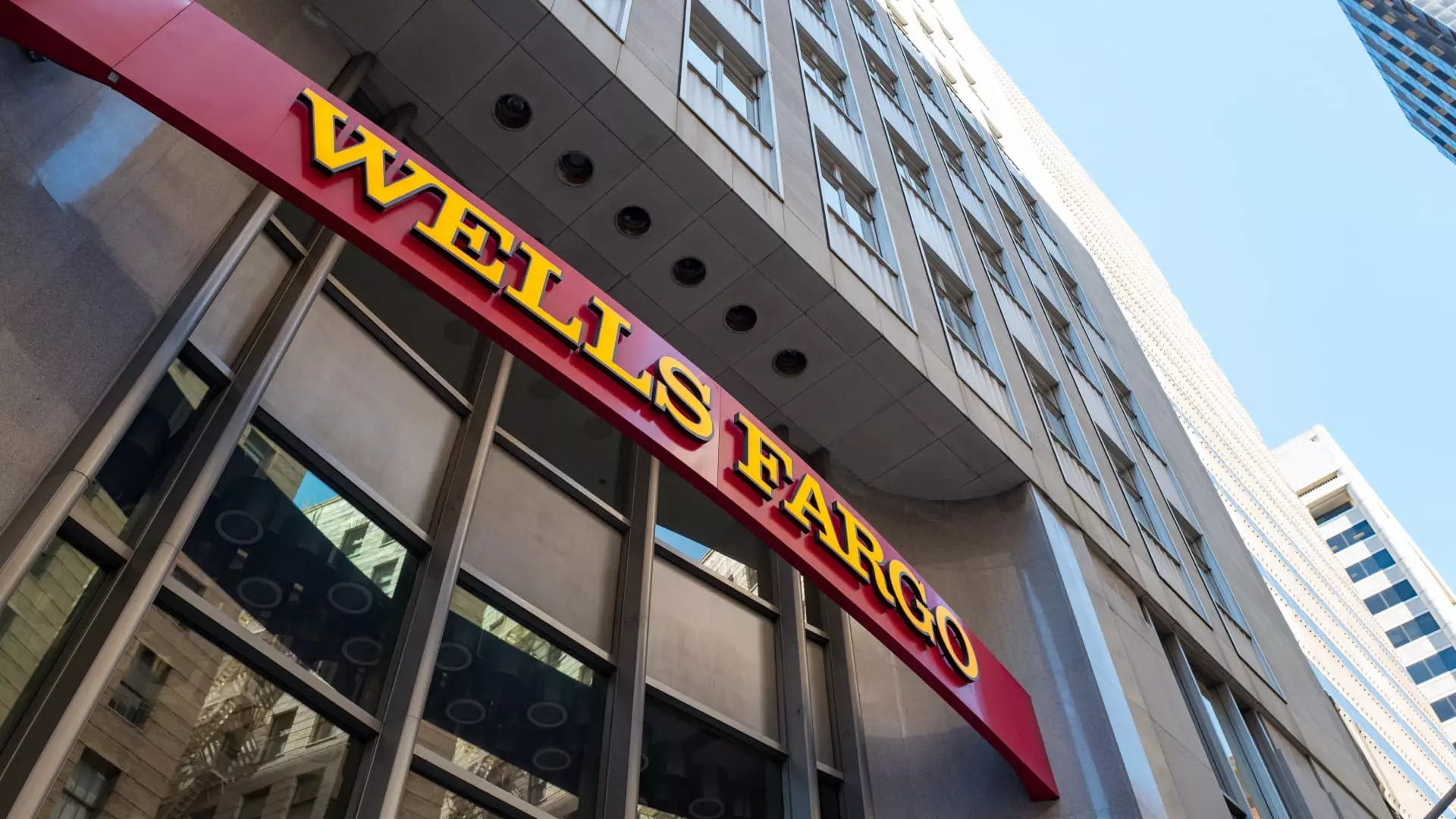Wells Fargo recently announced its fourth-quarter earnings, revealing a blend of robust performance metrics along with some underwhelming figures. The bank’s total revenue for the quarter totaled $20.38 billion, which was a slight dip of 0.5% compared to the same period last year. This revenue figure fell short of analysts’ expectations, which projected $20.59 billion. Nevertheless, the adjusted earnings per share (EPS) came in at $1.58, considerably higher than Wall Street’s anticipated $1.35. These results highlight a complex scenario at Wells Fargo where while certain areas underperformed expectations, others decidedly surpassed them.
Overall, while the top-line revenue fell slightly short, the beat on adjusted earnings led to a positive sentiment in the stock market, with shares rallying approximately 7% post-announcement, trading above $76. This investor enthusiasm appears largely attributable to the bank’s optimistic outlook for 2025, which painted a brighter picture for future performance despite the current revenue setbacks.
The driving force behind Wells Fargo’s recent success can be traced back to its CEO, Charlie Scharf, who has been implementing significant changes aimed at rehabilitating the bank’s reputation and operational framework. Scharf’s strategy centers around reducing the company’s historically bloated cost structure and diversifying its revenue streams by enhancing fee-based services, thereby diminishing Wells Fargo’s heavy reliance on net interest income (NII). This proactive approach has begun to yield results, with the bank achieving a return on tangible common equity (ROTCE) of 13.4% for 2024, although still short of the 15% target.
Despite the evident progress under Scharf’s stewardship, the latest quarter’s fee-based revenue growth was slower than anticipated, raising some concerns among analysts and investors. It’s evident that while the shifts within the operational framework are fundamental in propelling the company, progress in certain segments must accelerate to ensure sustained growth and investor confidence.
The backdrop of Wells Fargo’s earnings report includes an evolving macroeconomic landscape that has influenced the banking sector significantly. Recent reports indicated a decline in net interest income, which fell by 7% year over year to $11.8 billion. This downturn was attributed to deposit mix shifts, the impacts of fluctuating interest rates, and a 3% decrease in average loans throughout the quarter. However, it is crucial to note that this total was still a beat against the estimates, indicating pockets of resilience within the bank’s operations.
While examining contributions from non-interest income, the overall figures were disappointing, missing estimates of $8.8 billion with actual results landing at $8.4 billion, despite showing a 10% year-over-year increase. Growth in key areas such as investment advisory fees and investment banking fees stands testament to the bank’s efforts to diversify and enhance its service offerings despite the setbacks in traditional lending activities.
A notable aspect of Wells Fargo’s forward-looking strategy hinges on the hope of lifting the Federal Reserve’s asset cap, imposed in response to past scandals. This cap, currently set at $1.95 trillion, has limited the bank’s growth, and its removal is anticipated to aid Wells Fargo in expanding its investment banking sector, an area already showing marked growth despite existing constraints.
Management guidance for 2025 is cautiously optimistic, predicting a stable NII growth trajectory and an anticipated slight decline in overall expenses. They expect NII to increase by 1% to 3%, with an implication of about $48.65 billion, thereby exceeding consensus projections, which is encouraging for investors. This anticipatory confidence, particularly regarding cost management and investment strategies, represents Wells Fargo’s commitment to stabilize its operational framework moving forward.
Despite a mixed earnings report, Wells Fargo’s stock performance has been buoyed by optimism surrounding its financial outlook for the coming years. Under the leadership of Charlie Scharf, the bank appears to be on the cusp of significant transformation post-adversity. By focusing on efficient operations and diversifying its income sources, Wells Fargo stands to regain favor in a competitive market landscape. While challenges remain, particularly in achieving consistent growth in revenue streams, the trajectory laid out by management positions Wells Fargo as a compelling opportunity for investors looking to navigate the complexities of the banking sector. The bank’s journey illustrates the potential recovery and evolution of a major financial institution following a tumultuous period, showcasing a commitment to sustainable growth aligned with broader economic trends.


Leave a Reply